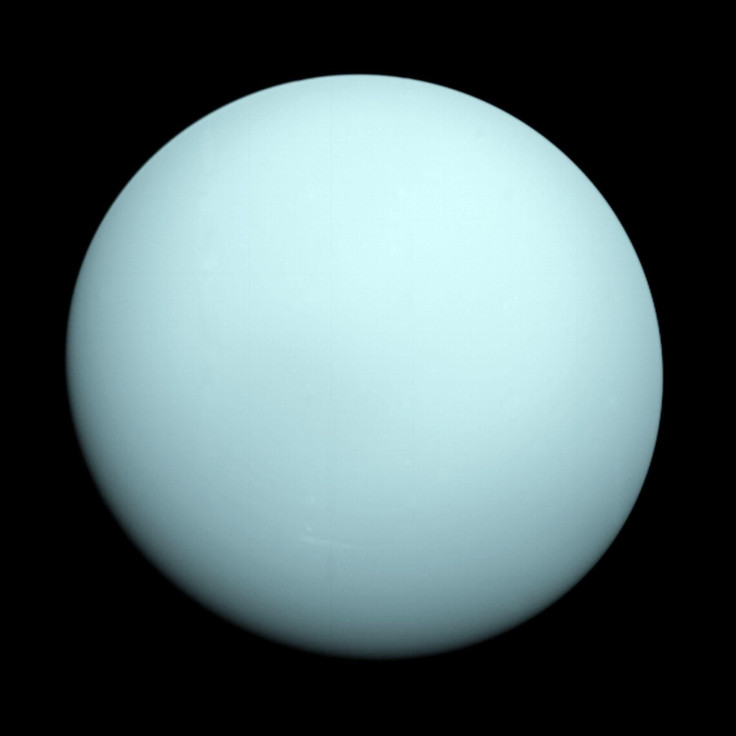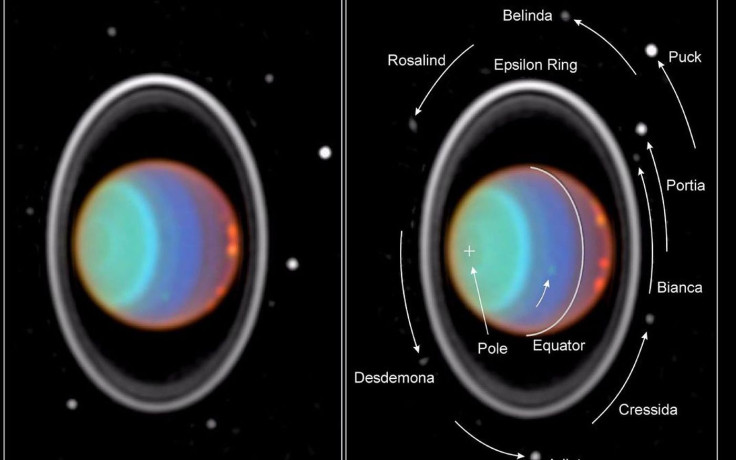Dark Moons Around Uranus Are Doomed To Crash And Die

Astronomers studying the area around Uranus say that some of its moons will crash into each other one day.
The team was looking at the orbits of the ice giant’s rings and moons and found two pairs of those moons are destined to collide and smash into bits, according to a report on their research. Cressida and Desdemona are orbiting Uranus only about 550 miles away from one another, and the former moon’s gravity is tugging on the latter and slowly pulling them closer and closer together. One day, about 1 million years from now, Cressida and Desdemona will slam into each other.
Two other moons, Cupid and Belinda, will share a similar fate, although it will happen sometime after that first collision.
These two crashes won’t be the first for the Uranus system, the report says, as the planet’s inner rings contain material that probably came from other moons that died long ago, when they themselves collided and were smashed into pieces.
The scientists say in a paper on their project that Uranus having rings that whirl around the planet near the orbits of its innermost moons “hints at the possibility of an evolving inner ring-moon system dominated by accretion,” referring to the process by which matter accumulates in space. When moons crash into each other and split into fragments, the particles are scooped up by gravity and sweep around Uranus, the third-largest planet after Jupiter and Saturn.
All four of the moons that appear doomed are smaller than 100 miles across.
The research was possible in part because the astronomers were working to better understand the masses of the moons around Uranus, the second to last planet in our solar system.
“A better grasp of inner Uranian satellite masses will provide another clue to the composition, dynamical stability, and history of Uranus’ tightly packed system of small moons,” according to their paper.
Clues about Cressida’s mass came from the way it interacted with the host planet’s rings. The research team was looking at those rings and observed that the gravitational pull of the moon Cressida was skewing them, making the rings flow around Uranus in an orbit that is more triangular than circular. Observing the gravitational pull was a tool for calculating Cressida’s mass.

Cressida, Desdemona and Belinda were discovered by the NASA spacecraft Voyager 2 in 1986, three in a group of 10 Uranian moons that were found during the Voyager project. Cupid wasn’t found until 2003, using the Hubble Space Telescope.
The former three moons, according to NASA, do not reflect a lot of light back into space, so scientists believe they are composed of dark material heavy in carbon, similar to what is found on some asteroids.
Cupid is dark as well, but not much is known about it.
In addition to this quartet, Uranus has 23 other moons. Most of them do not reflect much light, such that NASA refers to them as being “blacker than asphalt.”
© Copyright IBTimes 2024. All rights reserved.





















